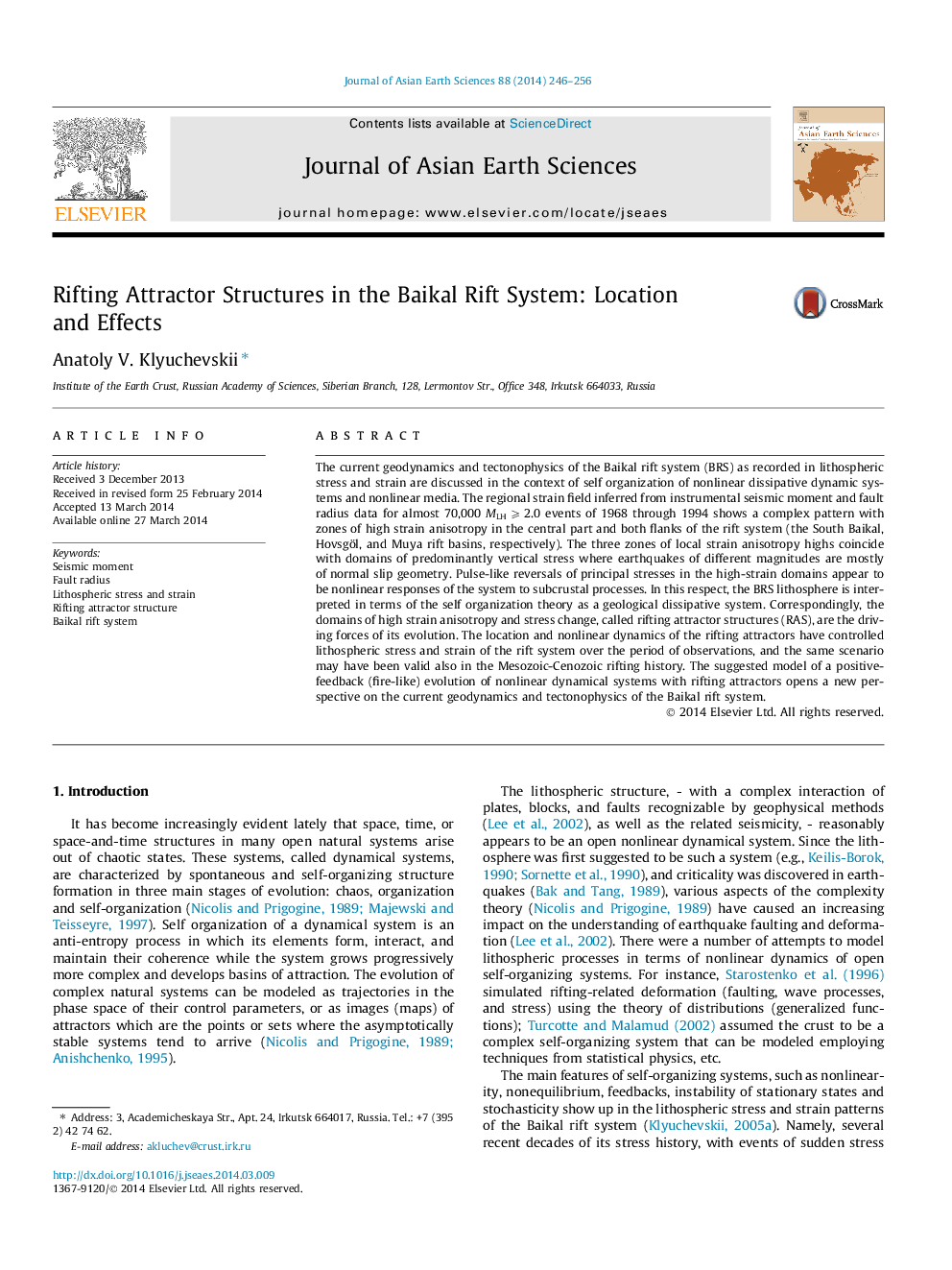| کد مقاله | کد نشریه | سال انتشار | مقاله انگلیسی | نسخه تمام متن |
|---|---|---|---|---|
| 4730679 | 1640380 | 2014 | 11 صفحه PDF | دانلود رایگان |
• There are three zones of high strain anisotropy and predominant normal-slip seismic failure in the Baikal rift system.
• These zones, interpreted as rifting attractor structures (RAS), may be the sources and generators of rifting.
• The effects of RAS show up in the patterns of stress, strain, and seismicity, and in some GPS data.
The current geodynamics and tectonophysics of the Baikal rift system (BRS) as recorded in lithospheric stress and strain are discussed in the context of self organization of nonlinear dissipative dynamic systems and nonlinear media. The regional strain field inferred from instrumental seismic moment and fault radius data for almost 70,000 MLH ⩾ 2.0 events of 1968 through 1994 shows a complex pattern with zones of high strain anisotropy in the central part and both flanks of the rift system (the South Baikal, Hovsgöl, and Muya rift basins, respectively). The three zones of local strain anisotropy highs coincide with domains of predominantly vertical stress where earthquakes of different magnitudes are mostly of normal slip geometry. Pulse-like reversals of principal stresses in the high-strain domains appear to be nonlinear responses of the system to subcrustal processes. In this respect, the BRS lithosphere is interpreted in terms of the self organization theory as a geological dissipative system. Correspondingly, the domains of high strain anisotropy and stress change, called rifting attractor structures (RAS), are the driving forces of its evolution. The location and nonlinear dynamics of the rifting attractors have controlled lithospheric stress and strain of the rift system over the period of observations, and the same scenario may have been valid also in the Mesozoic-Cenozoic rifting history. The suggested model of a positive-feedback (fire-like) evolution of nonlinear dynamical systems with rifting attractors opens a new perspective on the current geodynamics and tectonophysics of the Baikal rift system.
Journal: Journal of Asian Earth Sciences - Volume 88, 1 July 2014, Pages 246–256
